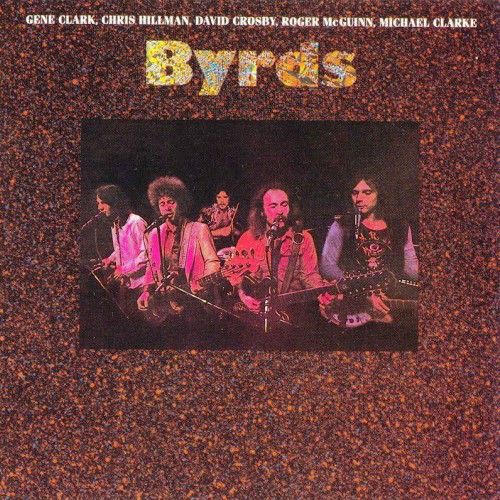

On Younger Than Yesterday, Crosby would contribute two songs collaboratively with McGuinn and two as the sole writer. Along with his songwriting and singing, Hillman’s bass playing comes into its own on this album, from the propulsive and hypnotic bass groove of the album single, “So You Want To Be A Rock ‘N’ Roll Star” (co-written by Hillman and Byrds frontman/figurehead Roger McGuinn) to the inventive and outstanding bouncing and noodling on Crosby’s album highlight, “Everybody’s Been Burned.”ĭavid Crosby, who’d contributed a couple of songs to the band’s previous record Fifth Dimension, was the other songwriter to step up to the plate in Gene Clark’s absence. They also provide some album highlights, including the crunchy and exciting guitar solo in “Have You Seen Her Face” and the raga-esque backwards guitar and layered vocals in “Thoughts and Words.” It should also be noted that for the first time Hillman sang lead vocals on all of his songwriting contributions, providing the Byrds’ signature vocal brand with a new, gentler, and less affected timbral element. The two other Hillman-penned songs on the album, “Thoughts and Words” and “Have You Seen Her Face,” fall more into the well-trodden Beatles/Byrds psychedelic rock category, but provide a connectivity in the album sequencing that helps push the record forward. Together these two songs look back to old country and bluegrass, but very much point forward toward The Byrds’ future as progenitors of the country rock genre as would be more fully explored later on The Byrds’ Sweetheart of the Rodeo, which famously included a pre- Flying Burrito Brothers Gram Parsons. Hillman’s catchy and upbeat Younger Than Yesterday composition “ The Girl With No Name” sits firmly in the country rock vein as well. In fact, these roots were so deeply ingrained that when feeling creatively invigorated after having played bass on a Hugh Masekela-produced session for South African singer Letta Mbulu, Hillman compulsively started writing the song that sprung forth was “ Time Between,” a song much more to do with country music than anything remotely South African. This folk/country/bluegrass upbringing laid deep roots within Hillman, and when it came time to write songs for The Byrds his compositions would reflect as much. Prior to becoming a Byrd, Chris Hillman had cut his teeth playing country and bluegrass mandolin in San Diego-first alongside future Eagles member Bernie Leadon in the Scottsville Squirrel Barkers, and then alongside future country star Vern Gosdin in the Golden State Boys (retroactively renamed The Hillmen after Hillman’s success with The Byrds).

The sound of the album is undeniably that of The Byrds’ brand-the 12 string Rickenbacker, the lush vocal harmonies, the driving backbeats, and even the obligatory Bob Dylan cover-but because of the increased songwriting contributions from Hillman and Crosby, this set of songs ventured further into new territories, pushing the Byrds’ sound to a new level of daring and maturity. Younger Than Yesterday was The Byrds’ first album without founding member and primary songwriter Gene Clark, and saw the remaining quartet, notably Chris Hillman and David Crosby, pull up the slack and step in as songwriters. One of their most consistent, cohesive, and enjoyable statements from start to finish is their 1967 album, Younger Than Yesterday. The Byrds, though, were much more than an era-defining soundbite-they were pioneers of new directions in rock music from raga to space to country and beyond, they put poetry and protest into a palpable package, introducing youth culture to a deeper version of pop music, and they were an album-oriented band that produced bodies of work that to this day stand up in quality, scope, and inventiveness next to that of their contemporaries, The Beatles and The Rolling Stones. And so for some, it is through this association that The Byrds have become a cliché of an era, a groovy novelty defined by one or two songs and a sound that we remember fondly but often leave as a stone unturned. Tambourine Man.” In fact, if you just imagine Daniel Stern’s voice, which provided the plaintive narration for The Wonder Years, you can almost immediately hear the aforementioned sounds providing that bittersweet, nostalgic accompaniment of yesteryear.
THE BYRDS BYRDS TV
In almost any documentary, TV show, or feature film about the “peace & love” Sixties you will likely hear the familiar chime of a 12-string electric guitar arpeggiating its way through “Turn, Turn, Turn” or “Mr.


 0 kommentar(er)
0 kommentar(er)
